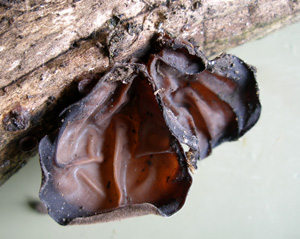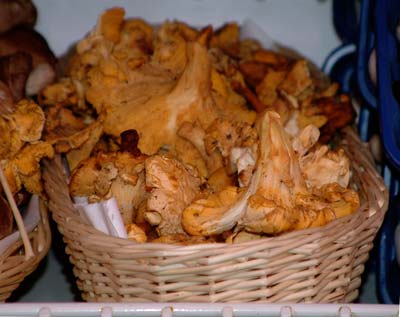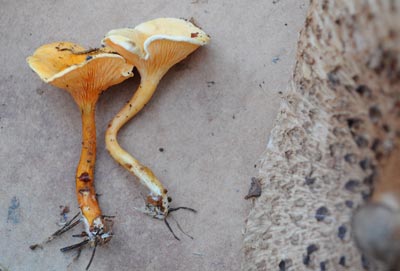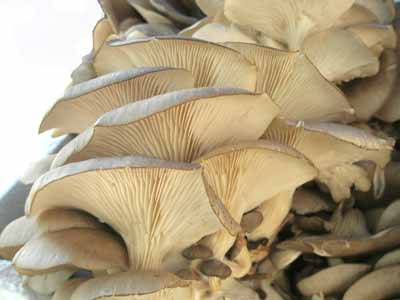
Judas's ear fungus, often found dried. Dried or fresh they should not be fried, as they explode, but stewed with other ingredients.
Molokhia leaves. Nalta jute. Jew's mallow. The leaves may be eaten raw or cooked. The leaves have a mucilaginous (thickening) quality that helps thicken soups. In the West the seeds and younger leaves are added to salads while older leaves may be used to make tea. It is mainly used as a herb.

Chanterelle mushroom, as it is known botanically, rather than on menus or in the kitchen. They are usually sautéed in butter with chopped onions.

False chanterelle as it is known botanically rather than in the kitchen. As its name implies, this masquerades as a chanterelle but, instead of the egg yellow of the chanterelle, this is a darker orange and sometimes with a graded cap, dark at the centre and becoming lighter towards the edges. The false chanterelle is found in woodland, particularly under pines. It is edible, but is rather bitter and tough and may cause indigestion. It is easily confused with other mushrooms which are poisonous, so especial care must be taken.

Oyster mushroom as it is know botanically rather than in the kitchen.